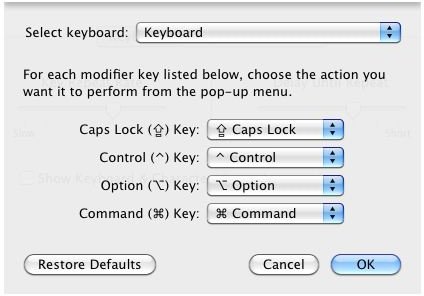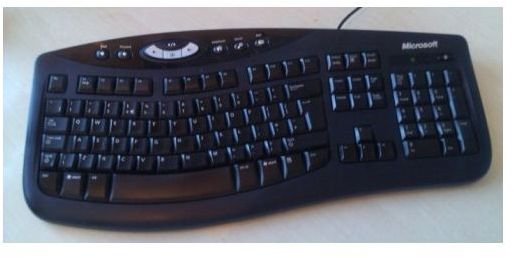Tips on Using a Microsoft Keyboard for Mac
Can I Use a Windows Keyboard on My Mac?
While you might think all keyboards are the same, the truth is they are not – there are subtle differences from device to device, with a keyboard from Microsoft offering different key sizes and slight differences in position to a keyboard from, say, Dell.
The problem is actually wider-ranging than this – for instance if the keyboard for your iMac stopped working and you needed an emergency replacement, you might opt to use a Microsoft keyboard. For Mac users this might seem anathema, and certainly there will be some problems.
After all, Apple keyboards feature various keys that cannot be found on a Windows or Linux keyboard – so how do you work around this?
Image provided by writer
Don’t I Need a Driver?
Not so long ago it was difficult to switch keyboards between different computer types. If you had a PS/2 keyboard, for instance (the type with the small round connector) then a PS/2 to USB adaptor would be required for connecting the input device to your Mac.
Additionally, drivers were often required, with few manufacturers providing keyboard drivers for Mac OS.
This isn’t much of a problem now. With USB enabling instantaneous use of your non-Mac keyboard of choice, all you need to worry about is with keys do what. Macs and Windows PCs alike feature drivers for many USB keyboards, which are built to a generic standard.
The main differences occur above and below the common QWERTY keys. On a Mac keyboard, the function keys run from F1 to F15, whereas on a Windows keyboard they run to F12. Similarly, the Mac uses a Command key and an Option key, something that standard keyboards don’t have.
Luckily swapping a Microsoft keyboard for a Mac keyboard is simply a case of being aware of the Mac key positions and transposing these to the Microsoft keys.
Swapping a Microsoft Keyboard for a Mac Keyboard - Which Keys Do What
In order to be familiar with the controls offered by a Mac keyboard when using a Windows keyboard, you will need to keep in mind where the differences occur.
For instance on a Mac there is a key to Eject optical disks – this is F12 on your Windows keyboard, while keys F13-F15 on a Mac are substituted with Print Screen, Scroll Lock and Pause/Break on a Windows input device.
The Windows key meanwhile corresponds to the Mac Command key, while the ALT key corresponds to Option.
Note that Mac OS X features differing conventions for keyboard shortcuts – if you’re using a Microsoft keyboard with your Mac, rather than selecting text and pressing CTRL+C to copy, you would press Windows key+C.
Remapping Keys on Your Mac

Using a Microsoft keyboard should be a useful substitute – however you might notice that the Command and Option keys are the wrong way around when using the substitute Windows key and ALT key.
Luckily this can be easily resolved in Mac OS X – simply go to System Preferences > Keyboard & Mouse > Keyboard and at the bottom right you will see Modifier keys…. With this tool you can swap over the functions of the Option and Command keys so that they are now where you would expect them to be, position-wise, on your keyboard!
References
Author’s own experience
